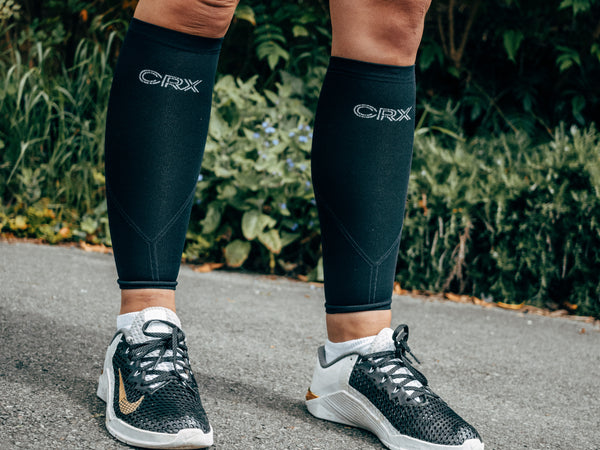Enhancing Workplace Wellness: The Comprehensive Benefits of Wearing Compression Wear
In the dynamic landscape of modern workplaces, individuals are constantly seeking ways to optimise their performance, enhance productivity, and maintain overall well-being. One innovative solution gaining traction is the incorporation of compression wear into daily work attire. Beyond its association with sports and fitness, compression wear offers a range of benefits that can positively impact professionals across diverse industries. In this article, we will delve into the myriad advantages of wearing compression garments in the workplace, exploring how they contribute to improved comfort, productivity, and long-term health.
Understanding Compression Wear
What is Compression Wear?
Compression wear, typically in the form of socks, sleeves, or tights, is designed to apply controlled pressure to specific areas of the body. The pressure is graduated, meaning it is strongest at the extremities and gradually decreases towards the core. This design facilitates improved blood circulation and lymphatic flow, offering a range of benefits that extend beyond the realms of sports and fitness.
Types of Compression Wear:
Compression Socks:
These are commonly worn on the legs and feet and are particularly effective in promoting blood circulation, reducing swelling, and preventing fatigue.
Compression Sleeves:
Designed for the arms, these sleeves provide targeted support to the muscles and joints, aiding in reducing muscle vibration during repetitive movements.
Compression Tights:
These cover the entire leg and are often recommended for individuals dealing with conditions like varicose veins or deep vein thrombosis (DVT).

Click Here: Shop our Unisex Compression Calf Sleeves
The Benefits of Compression Wear in the Workplace
Improved Blood Circulation:
One of the primary benefits of compression wear is its ability to enhance blood circulation. By promoting efficient blood flow, these garments reduce the risk of blood pooling in the extremities, preventing conditions such as varicose veins and maintaining optimal cardiovascular health. In a workplace setting, improved circulation translates to increased energy levels and reduced fatigue, fostering a more focused and productive work environment.
Alleviation of Leg Discomfort:
Professionals who spend long hours standing or sitting at desks may often experience leg discomfort and swelling. Compression socks or stockings can provide relief by preventing fluid buildup in the lower limbs and reducing the strain on the vascular system. This is particularly beneficial for individuals in occupations that require prolonged periods of static positioning, such as healthcare professionals, teachers, or office workers.
Prevention of Deep Vein Thrombosis (DVT):
Sedentary work environments, especially those involving extended periods of sitting, can increase the risk of DVT. Compression wear acts as a proactive measure by promoting blood circulation and preventing the formation of blood clots, safeguarding the vascular health of individuals in desk-bound professions.
Enhanced Muscle Support and Joint Stability:
For professionals engaged in physically demanding occupations or those requiring repetitive movements, compression sleeves can offer targeted support to muscles and joints. This helps in reducing muscle vibration, minimizing the risk of strain or injury, and promoting overall musculoskeletal health.
Increased Energy and Productivity:
Improved blood circulation and reduced discomfort contribute to increased energy levels and enhanced productivity. Employees who wear compression garments often report feeling more focused and alert throughout the workday, leading to improved job performance and job satisfaction.
Accelerated Recovery from Work-Related Stress:
High-stress work environments can take a toll on both the body and mind. Compression wear aids in faster recovery by promoting blood flow, reducing muscle soreness, and alleviating the physical stress associated with demanding occupations. This can be especially valuable for professionals dealing with tight deadlines, high-pressure situations, or physically demanding tasks.
Thermal Regulation:
Some compression wear is designed with moisture-wicking and thermal regulation properties. This ensures that individuals remain comfortable in various work environments, whether they are exposed to temperature fluctuations or spending extended periods in climate-controlled offices.

Choosing and Incorporating Compression Wear in the Workplace
Selecting the Right Compression Level:
The effectiveness of compression wear depends on choosing the appropriate compression level. Compression garments come in varying levels of pressure, measured in millimetres of mercury (mmHg). There are 4 levels of pressure ranging from Class 1 (14-17mmHg) to Class 4 (+35mmHg). Class 2 compression (18-24mmHg), the level doctors prescribe, is excellent choice for most workplace scenarios, promoting comfort and effectiveness without compromising circulation.
Integrating Compression Wear into Work Attire:
While compression wear may not be a traditional part of workplace attire, advancements in design and aesthetics make it easier to seamlessly integrate these garments into professional clothing. Compression socks, for example, are available in various styles and colours, allowing individuals to maintain a polished appearance while reaping the benefits of compression therapy.
Consistency is Key:
To maximise the benefits of compression wear, consistency is crucial. Individuals should wear compression garments regularly during work hours, especially if their job involves prolonged periods of sitting or standing. Adhering to a consistent routine ensures the sustained positive effects of compression therapy.
Breaking Myths and Overcoming Resistance
Myth: Compression Wear is Uncomfortable or Unprofessional:
Modern compression wear is designed with both comfort and aesthetics in mind. Breathable fabrics, ergonomic designs, and stylish options make it possible for professionals to experience the benefits of compression therapy without compromising on comfort or style.
Myth: Compression Wear is Only for Athletes:
While compression wear is widely associated with athletic performance, its benefits extend far beyond sports. Individuals across various professions, from healthcare to finance, can leverage compression wear to enhance their well-being and productivity in the workplace.
Overcoming Resistance:
Encouraging workplace awareness and education about the benefits of compression wear can help overcome any resistance or scepticism. Sharing success stories, providing information on the science behind compression therapy, and emphasising the long-term health advantages can contribute to a more accepting workplace culture.
Conclusion
As the nature of work evolves and professionals seek holistic approaches to enhance their performance and well-being, the adoption of compression wear in the workplace is poised to become a mainstream trend. From improved circulation and reduced discomfort to increased energy levels and productivity, the benefits of wearing compression garments extend to individuals across various industries and professions. As workplaces prioritize employee health and comfort, embracing compression wear represents a proactive step towards creating environments that foster both professional success and personal well-being. By recognizing the comprehensive advantages of compression wear, individuals can equip themselves with a valuable tool for navigating the demands of the modern workplace with resilience and vitality.




